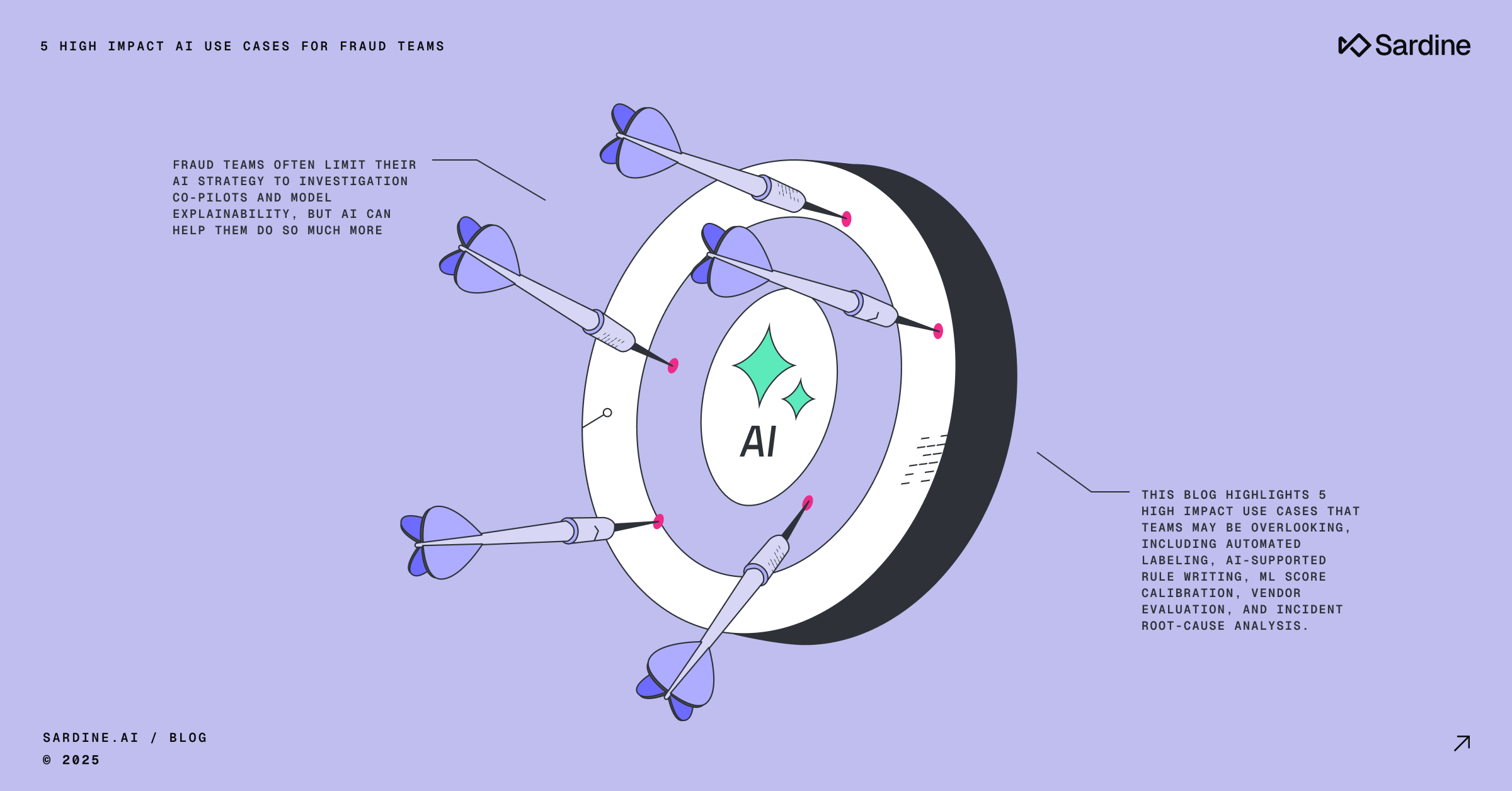Fraud and Payments are two sides of the same coin with Blockchain.com & Sardine
Conversion at checkout is the lifeblood of any merchant.
This is especially true for companies like Blockchain.com, which find that users are unlikely to return if they can’t access their service. But when a consumer has a good experience, they not only make the first transaction, they’ll go on to buy other cryptocurrencies and become repeat customers.
Conversion is critical.
Yet at the industry level, rejection rates are at least 20%, and Sardine has seen an average of 50%. There is a massive opportunity for new revenue if this number can be improved.
Blockchain.com has taken a radical approach to solve for conversion and is sharing its experience to improve outcomes across the industry. Blockchain.com has taken two distinct teams, Fraud and Payments, and combined them into one team with a singular focus–the same priorities, OKRs, and people.
Why?
Changing how you manage fraud changes everything.
“If you change how your payments stack works, you can improve revenues by basis points. Changing your fraud performance can improve your revenues by percentage points. It is a much more efficient use of time.”
— Jim Wang, Head of Payment Product, Blockchain.com
This doesn’t mean allowing more fraudsters in but keeping them out in the first place.
The key insight is that while less fraud is good for everyone, it just happens to create significantly better conversion. At Sardine, we think this will emerge as an industry best practice.
Before we dive into how you have to understand how fraud works.
The traditional approach to Fraud management
Fraud was always seen as a tax on business, and in many places still is. The fraud team aims to reduce fraud, often by introducing customer friction, and their OKRs, priorities, and team structure are aligned to reduce fraud. The payments team aims to increase conversion and would lobby the fraud team to reduce friction and be more permissive.
In traditional structures, this becomes an adversarial relationship.
What many operators eventually discover is that if you deeply understand fraud, you can actually significantly improve conversion rates.
Payments are easy; edge cases are hard.
Instructing a payment is simple for a merchant or Fintech business. Create a payment file (e.g., ISO8583), or send a message to an API with the relevant payment details, and the money should move.
The problem is it doesn’t always work that way. Payments will fail for a long list of reasons that aren’t apparent until you’ve spent some time in the industry.
As an example:
- Many payment companies have a default fraud rule set but lack experience in a particular industry (e.g., Crypto). This means lots of good customers get blocked (false positives) because rules about what gets declined were set somewhere else by someone else.
- Many fraud solutions lack the breadth of data needed to sort true fraud from things that look a bit like fraud (false positives). For example, if you only look at payment data, transaction amount, and the history of that card number, a payment might look like fraud. But if you look at the device, the user’s history on the platform, and their behavior, you can see it is a case of falsely identifying a good user as a fraudster (a false positive).
What’s more, fraudsters often know that growth companies lack sophistication when managing fraud. So they’ll take advantage of the gaps and make transactions that are unlikely to trip a wire in a default fraud approach.
Bringing these two problems together creates the ultimate win/win.
Less fraud, more conversion
Blockchain brought its fraud and payments teams together with a single priority: increase conversion and reduce fraud.
The goal is to create an experience where good users can join the platform (and, yes, generate fee revenue for Blockchain.com in the process), while fraudsters are less likely to be able to game the system.
“Investing in anti-fraud is a no-brainer based on the economics. Since we’ve taken this approach, we’ve seen fraud rates fall, and conversion is up by 10%. Since partnering with Sardine, we’re seeing that trend continue to improve.”
— Jim Wang, Head of Payment Product, Blockchain.com
A call to the whole industry
Blockchain.com hopes that by sharing best practices, we can enhance the reputation of the crypto industry as a whole.
But there’s another way to improve conversion and reduce fraud –sharing data about fraud patterns as an industry. This is common in traditional finance, but there had been no forum for Fintech and Crypto companies that was global, data-driven, and well-attended. Sardine intends to build one.
By sharing data, we spot common fraud patterns and how they change over time. This means fraud prevention techniques can become more accurate and sophisticated.
Sardine brought together Crypto, Fintech, and traditional finance industry participants at Money 2020 in Las Vegas. From here, Sardine will run a series of events to look at how we can change the industry’s profile.
The goal is to forever alter the industry's perception from one seen as fraught with scams, hacks, and fraud to a field that sets the standard in data-driven fraud prevention.
We’ll be running a dinner in London in January too, and if you’re interested in attending or just getting involved, contact us.



%20(1).png)





.png)

